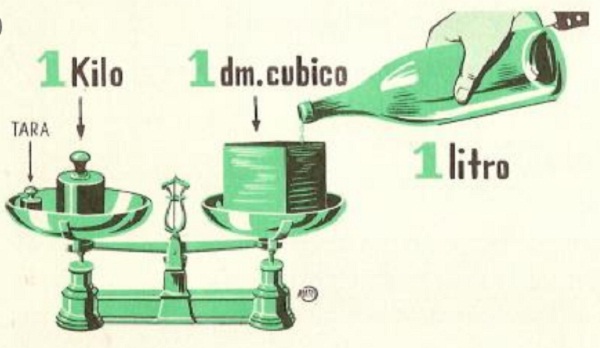The measures of weight and mass, necessary for life. They are indispensable for life, commerce, industry, science, research and the world around us. Based on the measurement of materials in liquid, solid and gaseous states. In order to know the mass of objects and the force with gravity acts on bodies.
What are the measures of weight and mass?
They are magnitudes but different. They are studied through objects and bodies. Now according to its characteristics, mass is the measure of quantity. It is constant because it does not vary by the location of object or body. It has units of measurement (Kg, g, tons, pounds, ounces) and is measured with a scale.
It is a fundamental property of an object or body. They are the numerical measure of their inertia and their symbol is “m”. It is related to the number, particles that make it up. It has a pattern and is independent of external factors. Compare and measure objects or bodies with a certain unique and universal pattern.


Other features
It's a scalar magnitude. While the weight, varies depending on the place where it is located. It is the force exerted by gravity exerted on a body or object and is measured in Newton, dynes, Kg-force, pounds-force, ounce-force and is measured with an instrument called a dynamometer. In the area of physics it is achieved as the product of acceleration by mass.
It depends on the place where it is located, the higher the weight, the farther away the quantification of the force exerted on a body or object is. It is the force caused by the fall of a body or thing. It is a vector magnitude that produces acceleration.
What are the weight and mass measurements?
Between the measures of weight and mass we have the existing relationship in which the units of mass are attributed to the weight. In the sense that when we get on a scale they tell us your weight is 80 Kg. Based on this fact, cultural formality has confused us with weight units. The one that should be calculated with the formula w= m x g.
Now the mass measurements according to the international system of measurements is the Kg that equals 1000 g, When we go to the grocery store or the butcher to buy a kilogram of meat of any type. They weigh us the amount of derivative we request (meat). If you order half a kilogram they will weigh you 500 grams of the amount of meat requested.
Unit
It is worth saying that the most commonly used units of mass are the kilogram and the gram. In the international system of unit of or metric system several units are expressed which are: Kilogram (Kg), hectogram (Hg), decagrams (Dg), used to express large measurements. The gram (g), decigram (dc), centigram (dg), centigram (cg), to express small measures.
The first three are higher units while the remaining ones are lower units.In addition, there are the quinta (q) and the metric quintal (qm) equivalent to 100 Kg = 4.167 % of precious metal, the ton = 1000 kg. Where the sale of coffee and sugar are made in quintals and to determine the weight of a truck or a trailer is executed in tons. These measurements are multiples of the kilogram.


Table of weight and mass measurements
The units of mass kilogram = 100º g, Hectogram = 100 g. Decagrams = 10 g, decigram = 0.1 g, centigram = 0.01 g, milligram = 0.001. Also 1 Kg = 2.2046 pounds and 0.001 tons while 0.4536 g = 1 pound and 0.00045 tons. Similarly 1000 Kg = 2204.6 pounds and 1 ton. One carat = 373.2417 g, they are used in goldsmithing and jewelry.
1 ton = 1000 Kg, in heavy matter such as oil, metals and in mining, an ounce ovorotopois = 28,349 g, the ounce troy = 31,103 g. In the same way there are other multiple or submultiple units in the system of measures which are. Teregram (Tg) = 1012 g. Gigagram (Gg) = 109 g, Megagram (Mg) =106 Mg, quintalmetric (qm) = 105 g.
Myriagram (Mag) =104 g, microgram (ug) =106 g, Besides nanogram (ng) = 10.9 g, picogram (pg) = 10-12 g, fentogram (fg) = 10-15 g.
Instruments for measuring weight and mass
Both the amount of matter and the amount of mass are they can be measured by different instruments. For the mass the balance is used, who is defined as is a measuring instrument that makes a comparison of masses. When comparing its mass with another known one. Some other scale like the which is unaffected by gravity and known as a counterweight. Compares the weight of the mass on the platform with that of some counterweights that are they move on the arm with marks.
The dynamometer, is used to quantify the weight, consists of a spring with a free end with a graduated scale in units of weight. We proceed to measure by simply hanging the object on the hook at the end loose.
I hope that the information is useful to give answers to the assignments of the school activity, if you need to review the article as many times as you deserve.

